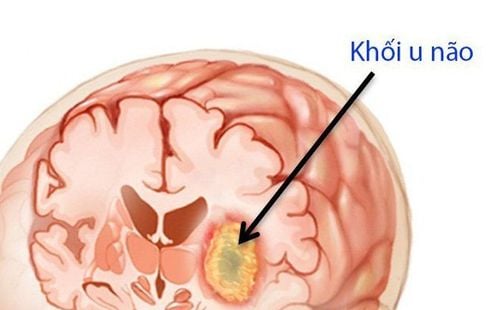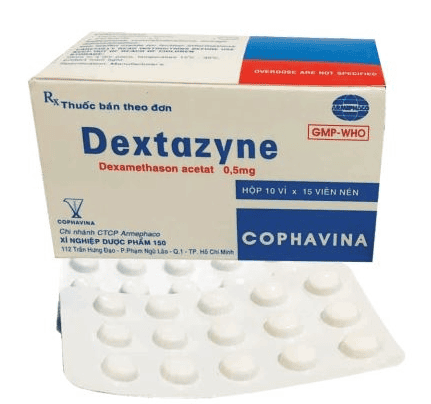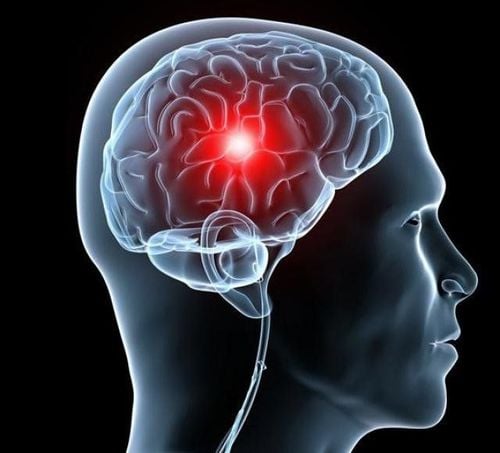This is an automatically translated article.
Increased intracranial pressure is an increase in pressure around the brain. When there are symptoms of increased intracranial pressure, if not treated promptly, it can be life-threatening.
1. What is increased intracranial pressure?
Increased intracranial pressure is an increase in pressure around the brain, due to an increased amount of fluid around the brain. For example, there is an increase in the amount of natural cerebrospinal fluid in the buffer zone of the brain, or bleeding into the brain due to trauma or the rupture of a tumor.
The cause of increased intracranial pressure can be due to the brain tissue swelling itself due to trauma, or due to medical conditions such as epilepsy, hypertension, meningitis, or brain tumor,...
Hypertension Intracranial force can also result from a brain injury or cause the brain injury itself. Increased intracranial pressure can cause cerebral edema, cerebral ischemia or brain collapse very quickly, causing irreversible damage, even death if not treated promptly.

Khối u trong não có thể là nguyên nhân gây tăng áp lực nội sọ
2. Symptoms of increased intracranial pressure
Common symptoms of increased intracranial pressure include:
Nausea, vomiting Headache: often increasing pain, pain can be localized or diffuse Decreased neurological capacity Hypertension Respiratory disorders: breathing shallow, rapid breathing Visual disturbances: diplopia, decreased visual acuity, fundus examination with papilledema. People do not respond to changing light conditions Convulsions Loss of consciousness, confusion about time, location and people around Coma: awakening suddenly coma or deepening coma, with increased expression Muscle tone In children, symptoms are similar to those in adults. However, in infants under 12 months of age, because the bony plates surrounding the skull are small and soft, with increased intracranial pressure it can move further apart. This is known as craniocervical separation. In addition, increased intracranial pressure also causes the soft fontanelle on the top of the baby's head to protrude.

Tăng áp lực nội sọ khiến thóp trẻ mềm và có thể bị lồi ra ngoài
3. Treatment of raised intracranial pressure
When a patient has symptoms of increased intracranial pressure, initial management is very important. Have the patient lie still first if the patient is awake. If there is no drop in blood pressure, lie down with the head elevated 30o - 45o. Provide oxygen and maintain blood pressure above baseline. Then transport the patient to the hospital.
The urgent goal is to relieve pressure inside the skull, and then resolve the underlying condition. There are many methods of treating raised intracranial pressure such as: removing part of the skull, using anesthetic and cooling the body or reducing body temperature.
An effective treatment for raised intracranial pressure is to drain the fluid with a tube bypassing a small opening in the skull or through the spinal cord. Medications that lower intracranial pressure may be used, such as hypertonic salts or the drugs mannitol. Use antibiotics if there are signs of nerve infection.
Patients with increased intracranial pressure need continuous monitoring of ICP to maintain adequate cerebral perfusion pressure and minimize complications. Increased intracranial pressure if not treated promptly will create a pathological spiral, increasing intracranial pressure can lead to seizures, stroke and irreversible brain damage. The most serious complication of increased intracranial pressure is cerebral depression, which causes rapid death of the patient.

Tăng áp lực nội sọ lâu ngày làm tăng nguy cơ gây đột quỵ
4. How to prevent increased intracranial pressure?
The most common cause of increased intracranial pressure is brain injury. Therefore, for effective prevention, start with the smallest thing like wearing a helmet when participating in traffic, or playing contact sports. Wear a seat belt while driving. In the elderly, the risk of falling is very high, so keep the floor clean and tidy and design handrails to minimize it.
Increased intracranial pressure is a life-threatening condition if not treated promptly. When you see signs of headache, unexplained blurred vision, immediately go to a medical facility for examination and brain scan to rule out the cause of increased intracranial pressure. When there is increased intracranial pressure, the patient needs to be closely monitored and promptly treated the cause.
To visit and treat at Vinmec, please go directly to Vinmec health system or register online HERE.













